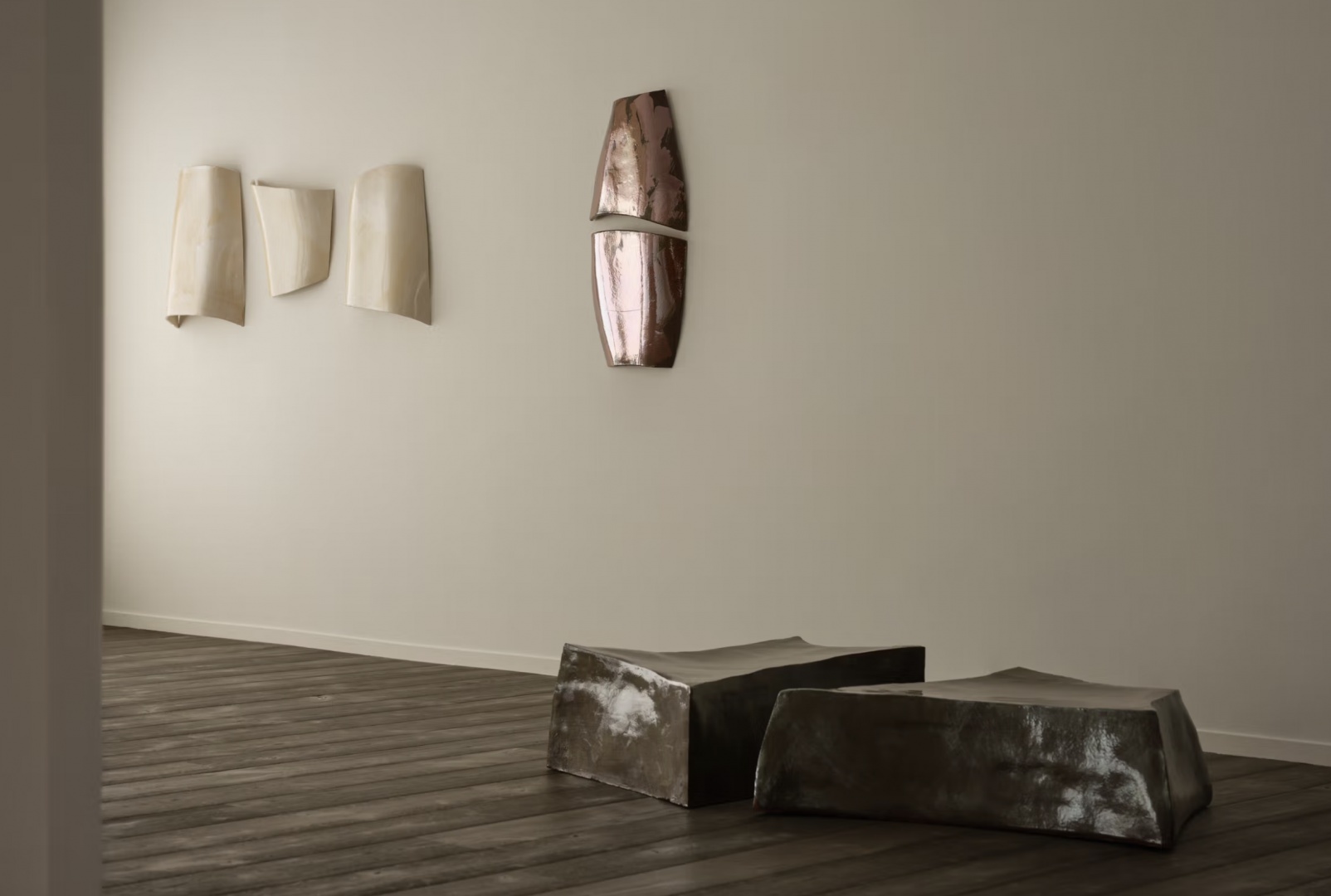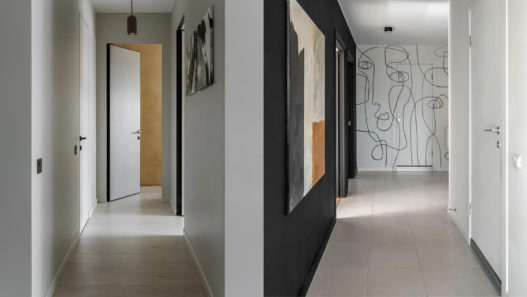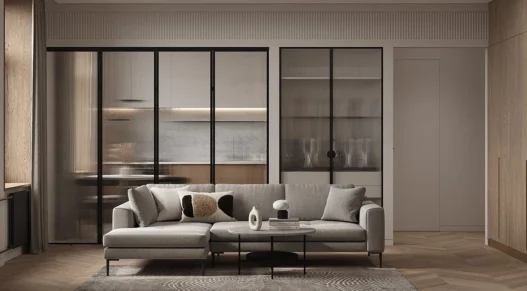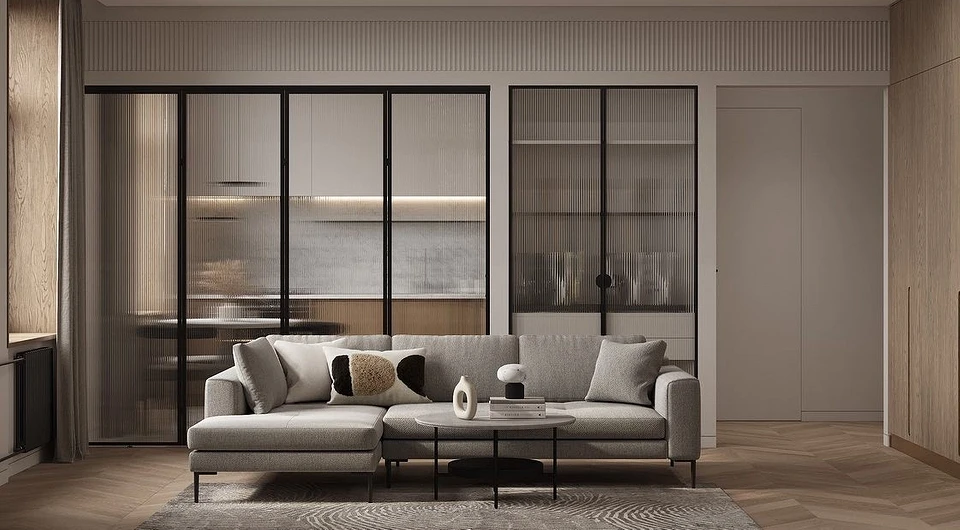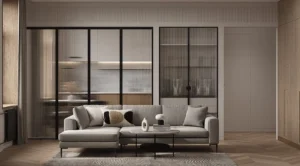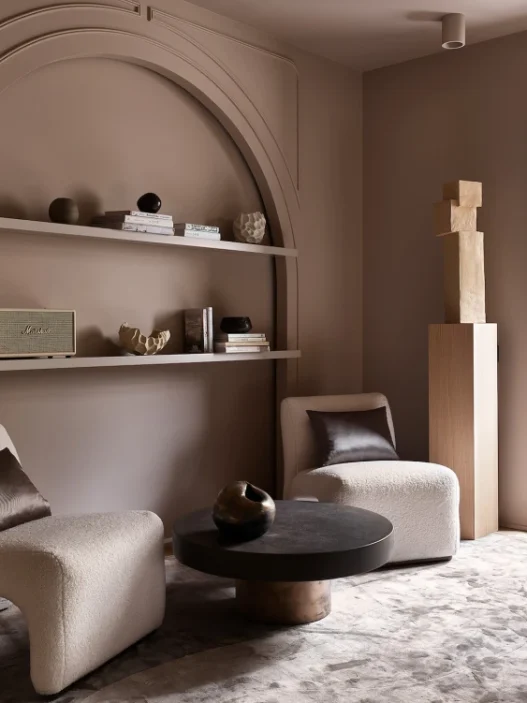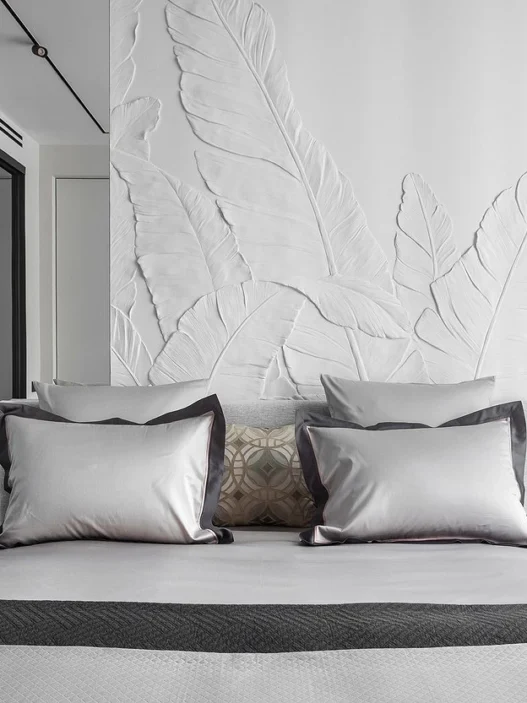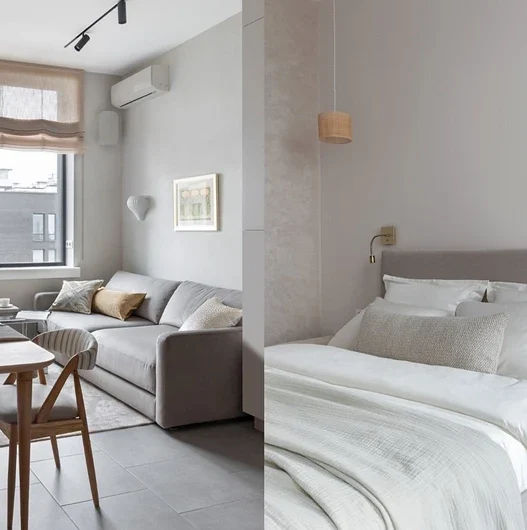In today’s fast-paced world, creating a tranquil and clutter-free living space has become a priority for many. Minimalist interior design offers a solution by emphasizing simplicity, functionality, and intentional living. This article explores five fundamental minimalist design principles to help you transform your space into a serene sanctuary.
The space around us, like a mirror, reflects our inner state and influences it. That is why restrained design without an excess of details is so popular now: in the modern frantic pace of life, you want to slow down at home, take a break from the hustle and bustle.
Features of the minimalist style
Minimalism is a relatively new trend in architecture and design, which emerged in the West in the last century as a response to the ostentatious luxury of the middle class. The excess of things and inappropriately pretentious lifestyle were opposed by laconicism, moderation, and visual simplicity. These features subsequently became the main postulates of the style, which gradually gained popularity throughout the world, organically combining with the ideas of conscious consumption, slow living, and self-care.
Minimalism does not have one specific “face” – it is not a set of visual rules, but first and foremost a life philosophy. And it needs to be shared so that you feel truly comfortable in a laconic (and sometimes even ascetic) interior.
Style rules:
- Free space – Space, light, and air are very important – this is why there is a popular opinion that a minimalist interior can only be found in large, expensive apartments with panoramic windows without curtains. This is not true: you can create a sense of space even in a small area by using various visual techniques. An open plan with proper zoning (without blind partitions and massive structures) will also help. A light palette, the absence of bulky furniture, and an excess of decor will do their job even in a standard apartment.
- Naturalness – Despite the fact that minimalist interiors can look completely different, they are united by the use of natural materials and colors. This is the key to coziness in the absence of a large number of things in the house. Eco-friendly decoration and furniture will improve the quality of life, and natural shades that are pleasing to the eye will help you relax and recuperate. But cheap plastic, acid colors, and an abundance of gloss definitely have no place in a minimalist home. The same applies to forms: all lines should be simple and clear.
- Rejection of excess – Minimalism does not accept clutter, and many are afraid of the need to get rid of their favorite things. But you don’t have to do this at all. It’s enough to honestly answer yourself what you really need and what you should say goodbye to. In addition, regularly declutter and move from quantity to quality. Choose durable furniture, multifunctional equipment, and a few, but unique decor.
- Expressed textures – Minimalistic does not mean boring – the absence of bright colors or a large number of decorations in this style is compensated by the use of pronounced textures. Different types of wood, metal and glass, stone, concrete, relief plaster, soft wool, thick linen – the more different tactile and visual sensations there are in the interior, the more voluminous it will be.
- Thoughtful storage systems – The main thing in minimalism is the absence of visual noise. Since in real life it is impossible to get rid of all things, leaving only a couple of paintings on the shelves, and several identical bottles in the bathroom, the problem will be solved by a well-thought-out storage system. And we are not talking about a specific closet or rack, but about organizing order in the entire house as a whole. This style is characterized by all sorts of built-in structures, especially modular ones. Most of the storage systems should be closed – this is very helpful in everyday life, and also simplifies cleaning.
Where to look for announcements of articles and fresh ideas for the interior?
Follow our social media! We publish beautiful selections, videos and reviews:
Instagram / Facebook / X / Pinterest
Design principles
Let’s look at how to decorate any room in a minimalist style step by step.
Palette
The color scheme supports the general desire for restraint and simplicity. The basis is neutral basic tones: white, gray, brown, beige, and black. They go well with each other, as well as with other colors, so it is almost impossible to make a mistake with such a palette. The main thing is to maintain a single color temperature and avoid monotony: use different shades of the same color or reveal the same tone on different textures.
Most often, light colors are used as a basis: they make the space visually larger, add light and air, and help to relax. If the area of the room and the height of the ceilings allow, you can choose a dark palette – in this case, use deep natural shades of brown, gray, black, and blue.
You can use bright color accents, for example, in small furniture or decor. Also choose natural shades that are not offensive to the eye: emerald, wine, terracotta, chocolate, eggplant, iand ndigo.
Finishing
Visual unity is important for this style, so the decoration in all rooms should be in the same style.
This does not mean that you need to choose a specific shade of paint and paint all the walls in it, from the hallway to the children’s room. It is enough to adhere to the chosen concept: the decoration can echo in colors or textures, somewhere repeat, and somewhere complement each other.
Materials should be durable and environmentally friendly. The philosophy of conscious consumption does not accept the “quick and cheap” approach – it is better to allocate a budget for a good renovation so that you do not have to update the damaged finish soon. If possible, give preference to natural materials: solid wood, stone, and natural fabrics. You can use high-quality alternatives (for example, MDF), as well as recycled materials. Ceramic tiles, quartz vinyl, porcelain stoneware, waterproof paint, and glass wallpaper are suitable for wet areas – the latter are not only resistant to moisture, but also have good vandal-proof properties.
The style involves a minimum of decor, so to avoid the walls looking empty, you can use textured finishes: for example, wall panels or decorative plaster. Wallpaper is used less often – it should not be too colorful. It is best to choose a single-color covering or one with a small, low-contrast pattern that is almost invisible. The floor and ceiling are usually decorated as simply as possible.
Furniture and equipment
Furniture should be practical, with a laconic design. Each item in the room solves some problem, and in no case takes up space for no reason.
Don’t try to fill all the free space. Place only what is necessary. Try to stay within the minimum “gentleman’s set”:
- Kitchen – furniture and dining area.
- Living room – soft group (pay special attention to the modular sofas !), TV area, storage system.
- Bedroom – a comfortable bed, a wardrobe, bedside tables or shelves.
- Children’s room – sleeping area, study corner, small play area.
- Hallway – storage system, hanger, mirror.
- Bathroom – plumbing fixtures, cabinet ,or storage cabinet.
The final set of furniture depends on the possibilities of the apartment and the lifestyle of the residents: someone will need a workplace (sometimes even more than one), a corner for reading, doing hobbies, or applying makeup. In a small apartment, you cannot do without multifunctional models: pouf-tables, sofa beds, etc.
From a design point of view, everything should be simple – no excessive decorative elements or unnatural ornate shapes. Depending on your preferences, you can bet on straight lines and angles or, conversely, on smooth and soft rounded silhouettes. Furniture can be in the same tones as the trim (especially if you have a monochrome interior ), or brighter. The smaller the accent piece, the more saturated its color can be. In any case, choose natural deep shades: terracotta instead of orange, cobalt instead of bright blue, etc.
The equipment should be as unnoticeable as possible. Built-in models are best, especially if they can be hidden behind facades. Use multifunctional devices (for example, an oven and microwave in one appliance), as well as all sorts of “smart” systems that will make life easier and help save resources.
Decor
In a minimalist interior, it is not necessary to completely abandon any decorations – there just shouldn’t be too many of them.
Choose decor not just to fill the emptiness on the wall or shelves, but also following some idea. Each item should be unique, organically complement the overall design, and add originality to the environment. One original painting looks brighter than a series of banal posters, and a soft blanket made of natural wool is better than a pile of synthetic decorative pillows.
In addition to the quality of the products themselves, it is necessary to maintain the general unity of all accessories. The decor within one room (and even better – the entire apartment) should be in the same style or color scheme, and convey some general mood. If you are not sure that you can harmoniously combine different items, choose jewelry from one brand or from similar collections – this will help you not to make a mistake.
